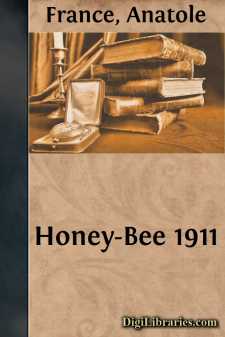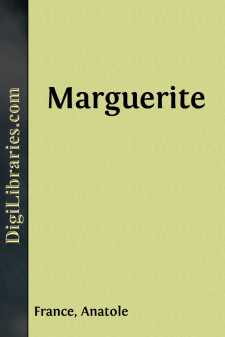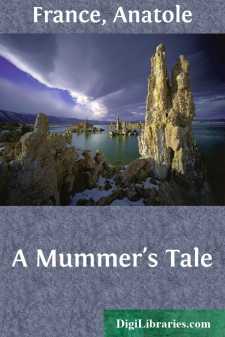Categories
- Antiques & Collectibles 13
- Architecture 36
- Art 48
- Bibles 22
- Biography & Autobiography 813
- Body, Mind & Spirit 142
- Business & Economics 28
- Children's Books 15
- Children's Fiction 12
- Computers 4
- Cooking 94
- Crafts & Hobbies 4
- Drama 346
- Education 46
- Family & Relationships 57
- Fiction 11828
- Games 19
- Gardening 17
- Health & Fitness 34
- History 1377
- House & Home 1
- Humor 147
- Juvenile Fiction 1873
- Juvenile Nonfiction 202
- Language Arts & Disciplines 88
- Law 16
- Literary Collections 686
- Literary Criticism 179
- Mathematics 13
- Medical 41
- Music 40
- Nature 179
- Non-Classifiable 1768
- Performing Arts 7
- Periodicals 1453
- Philosophy 64
- Photography 2
- Poetry 896
- Political Science 203
- Psychology 42
- Reference 154
- Religion 513
- Science 126
- Self-Help 84
- Social Science 81
- Sports & Recreation 34
- Study Aids 3
- Technology & Engineering 59
- Transportation 23
- Travel 463
- True Crime 29
Honey-Bee 1911
by: Anatole France
Description:
Excerpt
"HONEY-BEE"
I
Which treats of the appearance of the country and serves as
Introduction
The sea covers to-day what was once the Duchy of Clarides. No trace of the town or the castle remains. But when it is calm there can be seen, it is said, within the circumference of a mile, huge trunks of trees standing on the bottom of the sea. A spot on the banks, which now serves as a station for the customhouse officers, is still called "The Tailor's Booth," and it is quite probable that this name is in memory of a certain Master Jean who is mentioned in this story. The sea, which encroaches year by year, will soon cover this spot so curiously named.
Such changes are in the nature of things. The mountains sink in the course of ages, and the depths of the seas, on the contrary, rise until their shells and corals are carried to the regions of clouds and ice.
Nothing endures. The face of land and sea is for ever changing. Tradition alone preserves the memory of men and places across the ages and renders real to us what has long ceased to exist. In telling you of Clarides I wish to take you back to times that have long since vanished. Thus I begin:
The Countess of Blanchelande having placed on her golden hair a little black hood embroidered with pearls....
But before proceeding I must beg very serious persons not to read this. It is not written for them. It is not written for grave people who despise trifles and who always require to be instructed. I only venture to offer this to those who like to be entertained, and whose minds are both young and gay. Only those who are amused by innocent pleasures will read this to the end. Of these I beg, should they have little children, that they will tell them about my Honey-Bee. I wish this story to please both boys and girls and yet I hardly dare to hope it will. It is too frivolous for them and, really, only suitable for old-fashioned children. I have a pretty little neighbour of nine whose library I examined the other day. I found many books on the microscope and the zoophytes, as well as several scientific story-books. One of these I opened at the following lines: "The cuttle-fish Sepia Officinalis is a cephalopodic mollusc whose body includes a spongy organ containing a chylaqueous fluid saturated with carbonate of lime." My pretty little neighbour finds this story very interesting. I beg of her, unless she wishes me to die of mortification, never to read the story of Honey-Bee.
In which we learn what the white rose meant to the Countess
of Blanchelande
Having placed on her golden hair a little black hood embroidered with pearls and bound about her waist a widow's girdle, the Countess of Blanchelande entered the chapel where it was her daily custom to pray for the soul of her husband who had been killed in single-handed combat with a giant from Ireland.
That day she saw a white rose lying on the cushion of her prie-Dieu; at sight of this she turned pale; her eyes grew dim; she bowed her head and wrung her hand....












